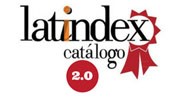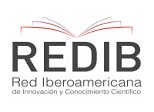Chone Multipurpose Project Irrigation Suitability Through Magnesium Absorption Ratio
DOI:
https://doi.org/10.69890/hallazgos21.v3i0.240Keywords:
Calcium carbonate (CaCO3); cations; hardness; magnesium; titration.Abstract
Chone basin is located in the province of Manabí and is formed by four micro basins: San Lorenzo river, Garrapata river, Mosquito river and Grande river. Chone Multipurpose Project (CHMPP) was installed at the Grande river, with two purposes: to provide drinking water to the canton and to provide water for irrigation to the population that is dedicated to agriculture, through a drainage system, which also avoids floods caused by El Niño phenomenon. This research aimed to establish the suitability for irrigation of the water of the CHMPP, based on the total, calcium and magnesium hardness variation in the Grande basin, before (2014) and after (2017) the dam began to operate. 17 sampling points were selected: one of them was in the CHMPP reservoir and the remaining ones, upstream of the Grande river. To measure total and calcium hardness, the APHA 2340 Hardness method was used; magnesium hardness was calculated with the difference of titration volumes and the soil suitability for irrigation in 2017 was established from the Magnesium Adsorption Ratio (MAR). According to the MAR, 70.6% of the tributaries upstream of the Grande river are not suitable for irrigation, so consideration should be given to the softening of these waters or the addition of calcium as amendment to balance ion exchange ratios in soil.
References
American Public Health Association. (2012). Standard Methods For the Examination of Water and Wastewater. Washington. Retrieved from https://www.mwa.co.th/download/file_upload/SMWW_1000-3000.pdf
Anchundia, A. (2012). Análisis de violación de derechos. Población Río Grande frente al proyecto de Propósito Múltiple Chone. Fundación Regional de Asesoría en Derechos Humanos. Retrieved from http://www.inredh.org/archivos/pdf/analisis_riogrande_chone_alexandra_anchundia.pdf
Ayers, R.S. (1994). Water quality for agriculture. Food and Agriculture Organization of the United Nations. Retrieved from http://www.fao.org/docrep/003/T0234E/T0234E06.htm#ch5.4
Badilla, H., Víquez, C., & Zamora, E. (2005). Evaluación de las Fuentes de Agua Potable de la Ciudad de Grecia.
Carrera, D., Crisanto, T., Guevara, P., & Maya, M. (2015, Marzo). Relationship between the inorganic chemical composition of water, precipitation and evaporation in the basin of Rio Grande, Chone, Ecuador. Enfoque UTE, VI(1), 25-34. Retrieved from http://www.ingenieria.ute.edu.ec/enfoqueute/index.php/revista/article/view/52/56
Carrera-Villacrés, D. (2007). Calidad de las aguas del sistema hidrográfico Zahuapán-Atoyac. Montecillo, TexCoco, Edo. México. Retrieved from http://colposdigital.colpos.mx:8080/jspui/handle/10521/1251
Carrera-Villacrés, D., Guevara-García, P., Maya-Carrillo, M., & Crisanto, T. (2015). Variations of Species Concentration in Inorganic Water Dam “Purpose Multiple Chone”, Ecuador Based on Precipitation, Evaporation and Evapotranspiration. Procedia Earth and Planetary Science, 641-646. doi:10.1016/j.proeps.2015.08.122
Centro del Agua y Desarrollo Sustentable. (2012). Perfil Territorial con Enfoque en Gestión de Riesgos del Cantón Chone. Escuela Superior Politécnica del Litoral. Retrieved from http://repositorio.cedia.org.ec/bitstream/123456789/839/1/Perfil%20territorial%20CHONE.pdf
Fuentes, F., & Massol-Deyá, A. (2002). Manual de Laboratorios: Ecología de Microorganismos. En Parámetros Físico-químicos: Alcalinidad (p.5). Puerto Rico: Universidad de Puerto Rico. Retrieved from http://www.uprm.edu/biology/profs/massol/manual/p2-alcalinidad.pdf
Martínez Yrízar, A., Búrquez, A., & Calmus, T. (2012). Disyuntivas: impactos ambientales asociados a la construcción de presas. Región y Sociedad, 24(3), 289-307. Retrieved from http://www.scielo.org.mx/pdf/regsoc/v24nspe3/v24nspe3a10.pdf
Millán, F., Mathison, J., Alvares, M., & Jarbouh, W. (2003). Estudio comparativo de la dureza del agua en el estado Mérida y algunas localidades del centro y occidente de Venezuela. Ciencia e Ingeniería, XXIV(1), 39-46. Retrieved from http://erevistas.saber.ula.ve/index.php/cienciaeingenieria/article/view/366
Nag, S. K., & Das, S. (2014). Quality Assessment of Groundwater with Special Emphasis on Irrigation and Domestic Suitability in Suri I & II Blocks, Birbhum District, West Bengal, India. American Journal of Water Resources, II(4), 81-98.
Neira Gutiérrez, M. A. (2006). Dureza en Aguas de Consumo Humano y uso Industrial, Impactos y medidas de Mitigación. Estudio de caso: Chile. Santiago de Chile. Retrieved from http://repositorio.uchile.cl/tesis/uchile/2006/neira_m/html/index-frames.html
Paliwal, K. (1972). Irrigation with saline water. Nueva Delhi: Indian Agricultural Research Institute.
Puente, M. E. (1998). In Plan de Medidas Preventivas, Mitigadoras y Compensadoras de Protección Ambiental del Programa de Modernización de los Servicios Agropecuarios (p. 120). Quito: Editorial Fraga. Retrieved from https://books.google.com.ec/books?id=XC4qAAAAYAAJ&printsec=frontcover&hl=es&source=gbs_ge_summary_r&cad=0#v=onepage&q=efecto%20barrera-represa%20&f=false
Rodríguez, J. (2009). Parámetros fisicoquímicos de dureza total en calcio y magnesio, pH, conductividad y temperatura del agua potable analizados en conjunto con las Asociaciones Administradoras del Acueducto, (ASADAS), de cada distrito de Grecia, cantón de Alajuela. Pensamiento Actual, IX(12), 125-134. Retrieved from https://dialnet.unirioja.es/descarga/articulo/5897932.pdf
Rodríguez, S. A. (2010). La Dureza del Agua. Editorial de la Universidad Tecnológica Nacional. Retrieved from http://www.edutecne.utn.edu.ar/agua/dureza_agua.pdf
Ruiz del Portal, A. (2003). Presas. Su relación con el medio ambiente. I.T.(62), 38-45. Retrieved from Sociedad Española de Presas y Embalses: http://www.seprem.es/st_agua_f/presas-su_relacion_con_el_medio_ambiente.pdf
Secretaría Nacional del Agua. (2010). Resumen ejecutivo del estudio de impacto ambiental y plan de manejo ambiental para el proyecto de propósito múltiple Chone. SENAGUA.
Sistema Nacional de Información. (2014). Ficha de Cifras Generales: Cantón Chone. Retrieved from http://app.sni.gob.ec/sni-link/sni/Portal%20SNI%202014/FICHAS%20F/1303_CHONE_MANABI.pdf
Thomas, K., & Sach, T. (2000). A multicentre randomized controlled trial of ion-exchange water softeners for the treatment of eczema in children: protocol for the Softened Water Eczema Trial (SWET). British Journal of Dermatology, 159(3), 561–566.
World Health Organization. (2011). Hardness in Drinking-water. Background document for development of WHO Guidelines for Drinking-water (Cuarta ed.). World Health Organization. Retrieved from http://www.who.int/water_sanitation_health/dwq/chemicals/hardness.pdf
Downloads
Published
How to Cite
Issue
Section
License
Los artículos enviados a la Revista Científica Hallazgos21 deberán ser totalmente originales e inéditos.
Los autores son los responsables de los textos y las imágenes incluidas en los artículos y no necesariamente reflejan el pensamiento de la editorial o de la Pontificia Universidad Católica del Ecuador, Sede Esmeraldas (PUCESE).
Los autores disponen cederle a la Revista Científica Hallazgos21 todos los derechos inherentes para la edición, publicación y distribución o divulgación del mismo.
Se autoriza a las revistas firmantes de los acuerdos de Encuentros de Revistas Latinoamericanas para reproducir en parte o totalmente los artículos con la sola mención de la fuente claramente señalada.







